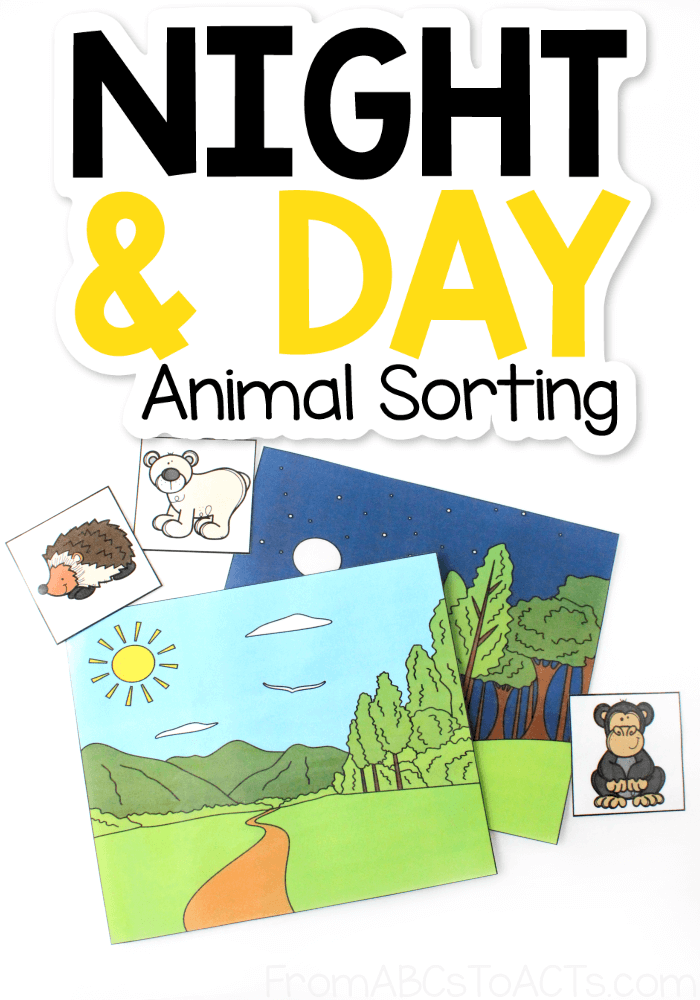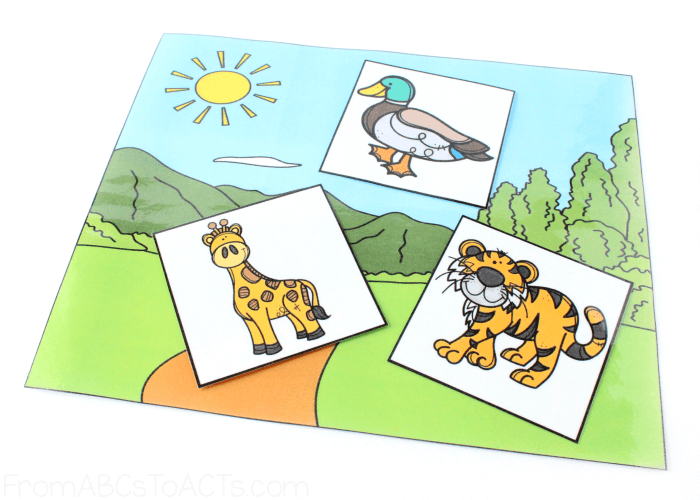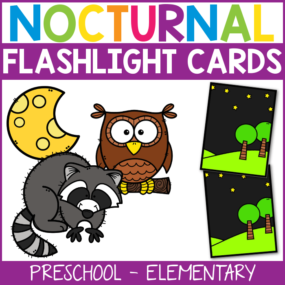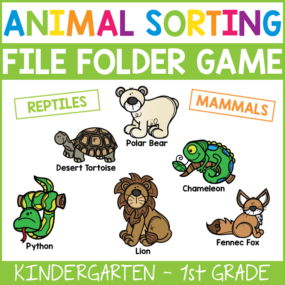This post may contain affiliate links. For more information, please see my full disclosure policy.
Learning about animals is definitely a popular theme in the preschool and early elementary grades. It important that our children learn to respect and care for the animals we share this planet with, along with learning about their life cycles, eating and sleeping habits, and their different habitats.

Nocturnal and Diurnal Animal Sorting
With mats that show a day and night landscape and twelve animal cards, this quick and easy printable is the perfect sorting activity for teaching your learners about nocturnal and diurnal animals. Once printed, simply cut the cards out and laminate for durability. Once made, start by having your learner explore the animal cards and name each animal pictured.
When each animal has been identified, let the sorting begin!

In the nocturnal animal cards, you’ll find:
- Spider
- Skunk
- Raccoon
- Owl
- Bat
- Hedgehog

In the diurnal animal cards, you’ll find:
- Polar Bear
- Chimp
- Duck
- Tiger
- Giraffe
- Zebra
This activity can be paired with a book that teaches about animal sleep patterns or could be used in a unit that explores different animals over a week or more. However you choose to incorporate it into your teaching, this simple mat activity will help your learner develop categorizing skills while learning about animals!
Learning About the Different Types of Animals
Although learning about animals and increasing sorting abilities are the primary skills your kiddos will learn from this fun activity, don’t be shy with incorporating numerical and phonetic fun too! While students work on identifying the animals, see if they can also identify the first sound of the animal’s name. Once they identify the sound, see if they know the corresponding letter!
Add in some simple math by counting how many animals there are total. Once the animals have been sorted, have your kiddo count how many day animals there are and how many night animals there are. Which group has more? Which group has less? Are they equal? Encouraging this type of exploration with your learner will not only strengthen their numerical and phonetic skills but will also help them develop a connection between school and the real world.


